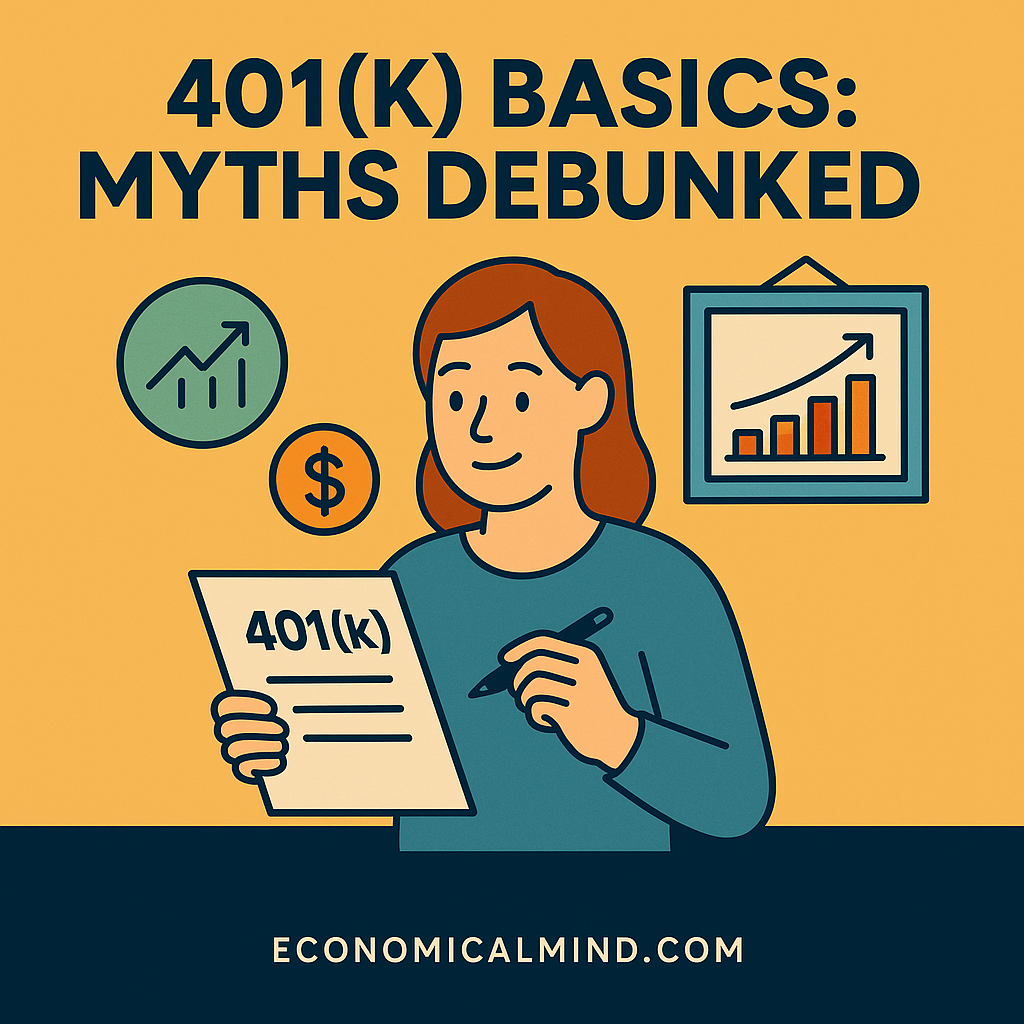
The 401(k) is one of the most powerful tools for retirement savings—but it’s also one of the most misunderstood. From employer matches to withdrawals, plenty of myths can lead to poor decisions and missed opportunities.
Let’s clear the confusion and break down the most common 401(k) myths so you can make smarter long-term moves with your money.
Myth 1: You should only contribute if your employer matches
An employer match is free money, but that doesn’t mean you should stop there. Even without a match, your 401(k) offers tax-deferred growth, meaning your investments compound faster because you’re not paying taxes on gains each year.
If your employer doesn’t offer a match, it’s still worth contributing—especially if you’re in a higher tax bracket or don’t have other retirement accounts.
Myth 2: You can’t access your money until you retire
While the goal is to save for retirement, your money isn’t locked away forever. Some plans allow hardship withdrawals or loans if you meet specific conditions.
That said, pulling money out early comes with penalties and taxes, so it should be a last resort. The key is understanding your plan’s rules before you need the funds.
Myth 3: You should always max out your 401(k)
Maxing out is great if you can afford it—but it’s not a requirement for success. What matters most is consistency. Even contributing a smaller, steady amount over time adds up thanks to compounding.
If you’re paying down high-interest debt or building an emergency fund, it’s often smarter to balance those priorities first before maxing your 401(k).
Myth 4: Your employer’s default investment choice is always best
Many employees stick with their plan’s default “target-date” fund, assuming it’s automatically optimized for them. While these funds can be a good fit, they’re not perfect for everyone.
You might prefer a custom mix of index funds, bonds, or equities that better aligns with your risk tolerance or retirement goals. Take time to review your options instead of leaving it on autopilot.
Myth 5: You don’t need to adjust your 401(k) over time
Your investment strategy shouldn’t stay the same forever. As you get older, your risk tolerance changes. Younger investors can handle more volatility, while those nearing retirement should lean more conservative.
Rebalancing your portfolio annually helps keep your investments aligned with your goals and avoids being overexposed to one sector or asset type.
Myth 6: 401(k)s are only worth it if you expect a high return
Returns fluctuate, but the tax advantages are constant. Whether the market performs well or not, your 401(k) still shields your contributions and growth from yearly taxes—something even the best regular investment account can’t match.
Tax deferral itself often adds thousands to your retirement savings over time, even in modest markets.
Myth 7: You can’t have both a 401(k) and an IRA
Good news—you can have both. Many savers contribute to their 401(k) for employer matching and open an IRA for more investment flexibility or different tax benefits.
Combining both accounts can diversify your strategy and potentially reduce your tax burden in retirement.
Real ways to make the most of your 401(k)
- Contribute enough to get the full employer match
- Increase your contribution rate every year
- Review your investments annually
- Take advantage of Roth 401(k) options if available
- Avoid early withdrawals and unnecessary loans
Key takeaway
Your 401(k) is one of the simplest and most effective retirement tools available—but only if you understand how it really works. Don’t let myths hold you back. The more you learn about your options, the better prepared you’ll be to build lasting wealth and retire on your own terms.
